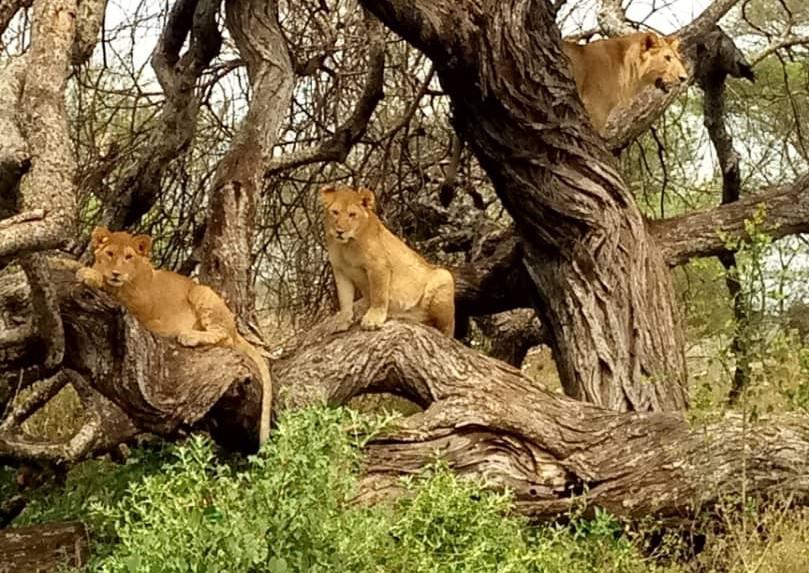Ayoub M. Asenga
The project aims to assess land cover changes over the past 32 years with attention in woody vegetation. We will quantify magnitudes of woody encroachment, describe its composition and configuration to highlight its patterns and encroached sites. Furthermore, we intend to underlay the extent of woody encroachment with its influencing factors to understand its processes, and enable its prediction over time given certain environmental conditions. Besides that, the project is focused on examining the movement patterns of lions, and estimating home range sizes for each pride involved. We will establish habitat preference for prey species among levels of encroachment and its correlation with lions’ range densities. The fine scale information produced by localising and characterising the extent of proliferation of woody plants, will help managing habitats by assisting control of woody encroachment and conservation of threatened lion population.

Lions in Maswa Game Reserve which is a part of southwest Serengeti ecosystem © Houssein Kimaro.
Increasing woody vegetation cover is a threat to savannah ecosystems, particularly in southwest Serengeti. The observed transformation of the precious plain grasslands and open woodlands into dense woody dominated landscapes, could adversely affect the great biodiversity they once supported. Encroaching woody species are often thorny and/or unpalatable to herbivores, suppressing herbaceous plant cover, and thereby altering fundamental ecological processes and plant community structure. Although it is recognised as the most threatening form of rangeland degradation, little effort has been made to understand its spatiotemporal changes and the allied factors. This has hampered understanding and prediction of woody encroachment across the ecosystem by its ecological complexity.
The change in vegetation structure caused by wood encroachment interferes with predator-prey relationships, which play integral role in ecological regulation, influencing ecosystem function and stability. Increasing density of woody plants adversely reduces grass quantity and quality, which is an essential component in supporting prey animals for lions. Under the prey-abundance theory, it is expected that lions should prefer areas with high densities of their prey, which might be areas with open grasslands and high grass cover. In contrast, the ambush-cover hypothesis predicts that lions prefer habitats with greater cover (with dense vegetation) to enhance their predation success. Yet, these contradicting hypotheses are poorly understood with respect to woody encroachment. Besides that, expansion of bush encroachment adjacent to villages might have increased the lions’ hunting radius, exacerbating their interaction with human that regularly results into conflicts.
With the use of Landsat satellite images from the year 1986 to 2018, we will quantify spatiotemporal land cover changes. The extent of woody encroachment will be correlated with selected influencing factors (soil types, fire regimes, average rainfall, waterways, drought index, and slopes). Three-year GPS collar data from lion prides will be used to investigate movement patterns and habitat preference of lions in different levels of woody encroachment. Additionally, we will conduct camera trapping surveys and line transect in different levels of encroachment to relate prey occurrence with ranging of lions.
Our work will have substantial and enduring contribution to the conservation of integral habitats and species including two world heritage sites, migratory corridors particularly for the great wildebeest migration, and the threatened lion population. Moreover, the detailed description of lion movements, will serve as a prerequisite in conflict resolution caused by interactions between lions and the adjacent villages in southwest Serengeti.